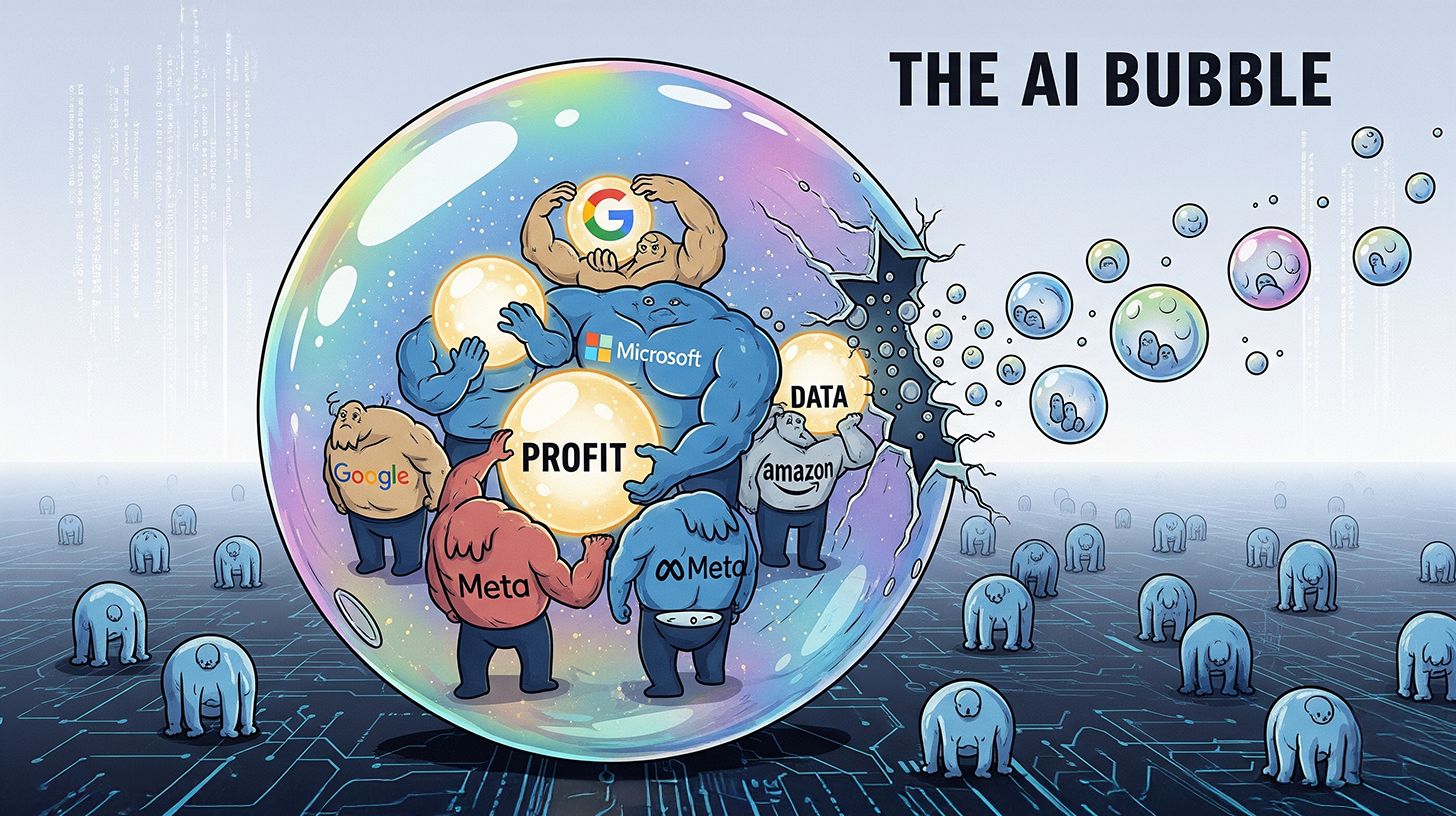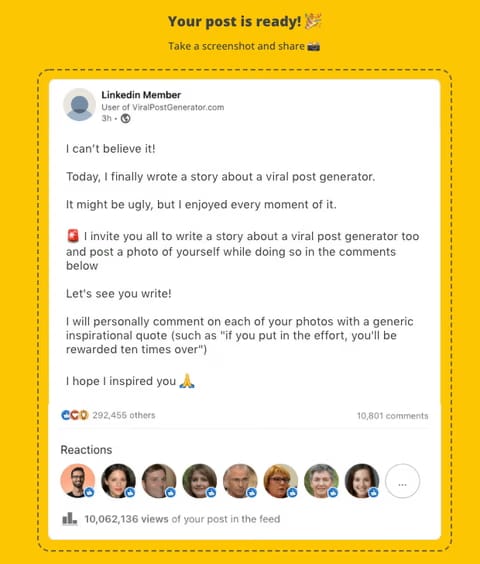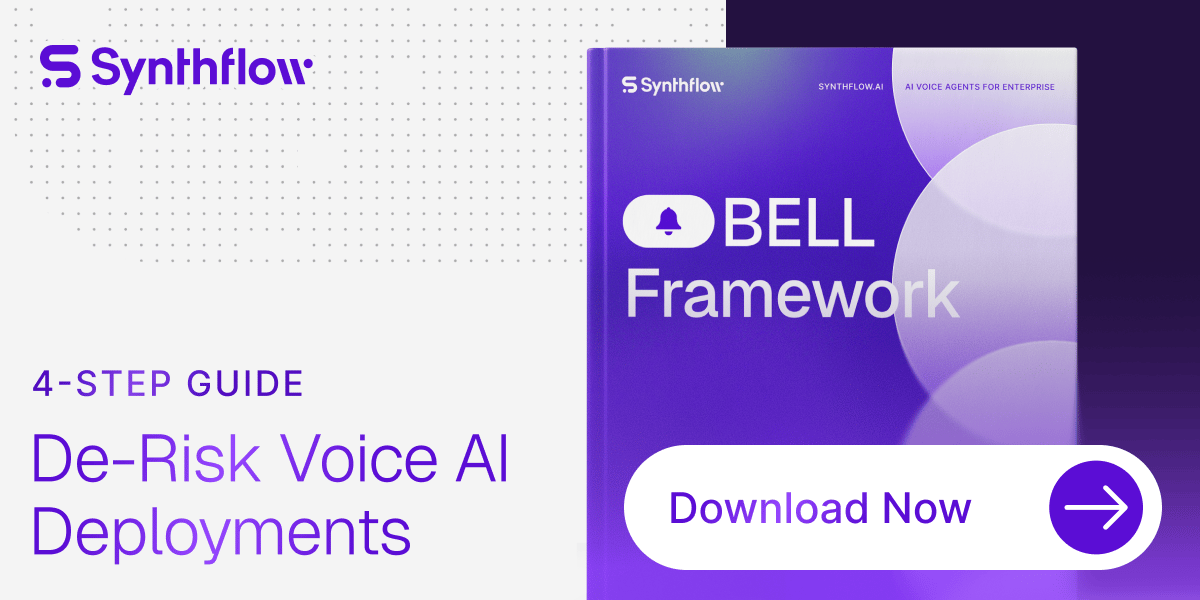- Weekly Olio
- Posts
- What an AI Bubble Burst Might Actually Look Like
What an AI Bubble Burst Might Actually Look Like
The trillion-dollar AI boom is starting to look fragile — beneath the hype, the promised revolution is stalling, and the real reckoning may not be financial but moral.
Salutations, Olio aficionados! 👋
Welcome to the 200th edition of Weekly Olio. We’re thrilled to introduce a fresh new twist to your Sundays: Publisher Parmesan, our hand-picked, thoughtfully crafted edition designed to spark inspiration and insights for the week ahead.
It’s the perfect way to unwind, recharge, and prepare for the week with something truly worth savoring.
If you’re new here and you’re looking for more long-form, crispy writing, click the link to subscribe under this GIF 👇

A word from our Sponsors…
AI-native CRM
“When I first opened Attio, I instantly got the feeling this was the next generation of CRM.”
— Margaret Shen, Head of GTM at Modal
Attio is the AI-native CRM for modern teams. With automatic enrichment, call intelligence, AI agents, flexible workflows and more, Attio works for any business and only takes minutes to set up.
Join industry leaders like Granola, Taskrabbit, Flatfile and more.
What an AI Bubble Burst Might Actually Look Like
Every bubble begins with a story that sounds too good to question. For AI, that story went like this: the technology was changing everything. It was rewriting code, transforming industries, and ushering in a new creative class. Tools like ChatGPT were supposed to democratize innovation — anyone could build, create, or code.
And yet, here we are, years into the hype cycle, and the evidence looks thin.
If AI is truly changing everything, where are the results? Where’s the flood of new apps, the explosion of creativity, the exponential charts that were supposed to define this era?
Because right now, the charts are flat. The revolution that was promised seems to be stuck in beta.

There is a strange disconnect that economist and writer Mike Judge noticed earlier this year. Judge, an early adopter of AI coding tools, posed a simple but devastating question:
If so many developers are suddenly “10x engineers,” where is the shovelware flood? Where are the thousands of new games, mobile apps, and websites? Where’s the indie software revolution that was supposed to happen when coding became frictionless?
He went looking for answers — real, empirical ones — and what he found infuriated him. Across every major data source, from software releases to code repository commits, the graphs were flat.
No spike in production. No burst of innovation. Just… steady lines.
If we were truly in the middle of an AI productivity revolution, the evidence would be visible in the output. It isn’t.
The Vibe Shift
Something about the mood around AI has changed.
The much-hyped GPT-5 launch in August — once billed as a major leap forward — landed with a thud. The model wasn’t bad; it just wasn’t better enough.
And that seemed to mark the start of a broader realization: what if AI doesn’t get dramatically better anytime soon?
The cracks are showing elsewhere too. An MIT study recently found that 95% of all generative AI pilot projects are failing. Models still hallucinate facts, make reasoning errors, and require constant human supervision.
Even on social media, the novelty has worn off. AI-written posts are easier to spot — they all sound eerily similar. You can recognize them by their overused tropes: “and then it hit me,” “silently,” “quietly,” and other giveaway phrasing that reads more synthetic than sincere.
The broader sentiment is unmistakable: we’ve hit peak AI hype.

Where’s the Real Value?
Even the people at the top are starting to ask the same uncomfortable questions.
Microsoft CEO Satya Nadella, arguably one of AI’s biggest champions, recently admitted that the technology isn’t yet producing measurable economic value. “If AI really is an industrial revolution,” he said, “then let’s see that kind of industrial revolution-type growth.”
He’s right. A true productivity revolution would be obvious — the world economy would be growing faster, output would be surging, and productivity metrics would be off the charts.
None of that is happening.
OpenAI’s most advanced systems still require extensive human oversight. Their AI “agents,” the ones said to be on the verge of transforming entire industries, are still clunky and unreliable.
Even Sam Altman, OpenAI’s CEO, has acknowledged that we’re in a speculative bubble. As of this year, there are more than 1,300 AI startups globally valued at over $100 million — a staggering number given how little actual revenue or market impact most of them have shown.
A correction, at some point, feels inevitable.
The Economic Stakes
When that correction comes, it won’t just be a tech story — it’ll be an economic one.
As Wall Street Journal columnist Christopher Mims recently noted, AI infrastructure spending has been so massive that in the past six months, it contributed more to U.S. GDP growth than all consumer spending combined.
Think about that. As a share of GDP, spending on AI infrastructure has already surpassed what was spent on telecom and internet infrastructure during the dotcom boom.
If that spending slows — even temporarily — the consequences could be brutal. A lot of what’s keeping U.S. growth afloat right now is the AI buildout: data centers, chips, and cloud services. If the bubble pops, it won’t just hurt investors; it could drag the economy down with it.
The New Enterprise Approach to Voice AI Deployment
A practical, repeatable lifecycle for designing, testing, and scaling Voice AI. Learn how BELL helps teams deploy faster, improve call outcomes, and maintain reliability across complex operations.
But the more lasting consequences won’t be economic. They’ll be social.
Nearly forty years ago, political theorist Langdon Winner warned about what happens when societies embrace technology without reflection. In his 1986 book The Whale and the Reactor, he wrote that technological revolutions often unfold as “unconscious experiments” — reshaping institutions, behaviors, and power structures long before we stop to ask whether the outcomes are desirable.
In one passage that feels eerily relevant today, Winner wrote:
“The important decisions are left in private hands, inspired by narrowly focused economic motives. While many recognize that these decisions have profound consequences for our common life, few seem prepared to own up to that fact.”
It’s hard to think of a better description of the current AI moment.
The pace of AI development is dictated by private labs and venture-backed startups, all chasing scale before scrutiny. The rest of society is being pulled along for the ride — as workers, consumers, and voters — without much say in how this transformation unfolds.
And as Aaron Benanav, author of Automation and the Future of Work, argues, the risk isn’t that AI will replace human labor entirely. The risk is that it will reshape work in ways that deepen inequality and precarity — automating surveillance, amplifying power imbalances, and concentrating profits even further at the top.
The Real Question
So maybe the real question isn’t what an AI bubble burst looks like.
Maybe it’s whether we’re willing to confront what this technology is doing to us — not economically, but socially and politically.
Because if the revolution never really happened, if AI never quite transformed the world in the way we were promised, that says less about the limits of the technology and more about the limits of our imagination.
The promise of AI was never just about productivity. It was about possibility — a belief that we could build something better, smarter, more human.
If the bubble bursts, that’s the reckoning we’ll face. Not just a financial correction, but a moral one.
Interested in learning more about AI? Check out our previous coverage here:
Find your customers on Roku this Black Friday
As with any digital ad campaign, the important thing is to reach streaming audiences who will convert. To that end, Roku’s self-service Ads Manager stands ready with powerful segmentation and targeting options. After all, you know your customers, and we know our streaming audience.
Worried it’s too late to spin up new Black Friday creative? With Roku Ads Manager, you can easily import and augment existing creative assets from your social channels. We also have AI-assisted upscaling, so every ad is primed for CTV.
Once you’ve done this, then you can easily set up A/B tests to flight different creative variants and Black Friday offers. If you’re a Shopify brand, you can even run shoppable ads directly on-screen so viewers can purchase with just a click of their Roku remote.
Bonus: we’re gifting you $5K in ad credits when you spend your first $5K on Roku Ads Manager. Just sign up and use code GET5K. Terms apply.
That’s all for this week. If you enjoyed this edition, we’d really appreciate if you shared it with a friend, family member or colleague.
We’ll be back in your inbox 2 PM IST next Sunday. Till then, have a productive week!
Disclaimer: The views, thoughts, and opinions expressed in the text belong solely to the author, and not necessarily to the author's employer, organization, committee or other group or individual.




Reply